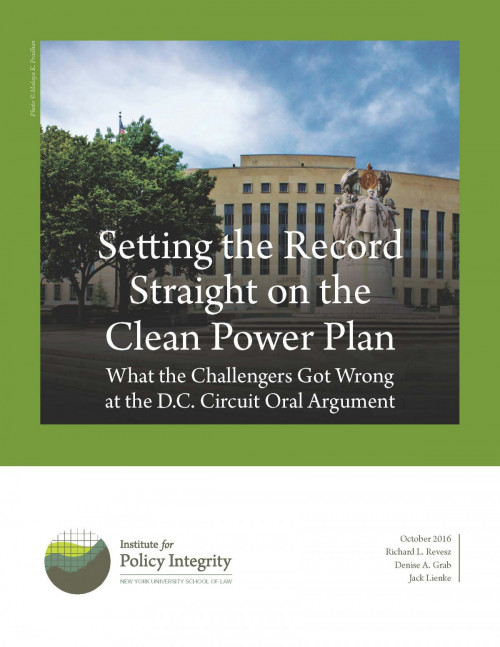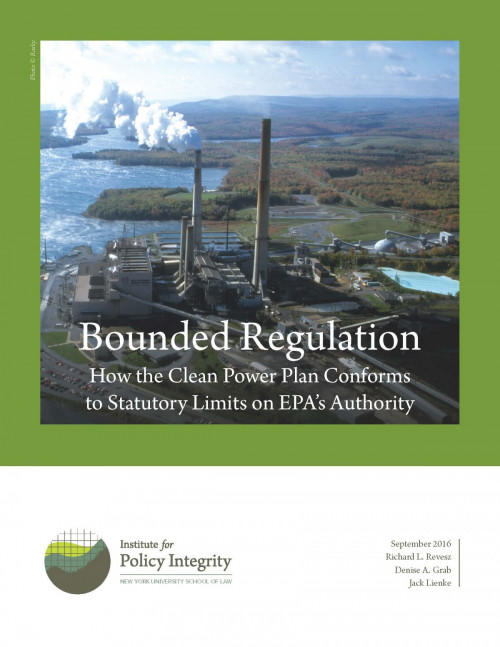-
Comments to California Air Resources Board on 2030 Target Scoping Plan Draft
This summer, California extended its greenhouse gas emissions reduction program to 2030 with two companion bills. The legislation modifies how the Air Resources Board (ARB), the state agency responsible for regulating air pollution, should assess proposed policy measures and prioritize goals in designing regulations. ARB staff released a preliminary draft of the scoping plan for how to meet the new 2030 targets in early December and is expected to release a second draft for comment in mid-January. We submitted comments on the December draft, making recommendations on how to structure the scoping plan’s economic analysis to best achieve the goals laid out in ARB’s new mandate.
-
Comments on Distributed Energy Valuation Methods in New York
The New York State Public Service Commission’s “Reforming the Energy Vision” initiative, an effort to modernize New York’s electricity policy, seeks to integrate distributed energy resources (DERs) into the state’s energy supply. The Commission sought proposals on how to compensate these producers of electricity for the full value that they provide to the electric grid. We submitted joint comments with the Environmental Defense Fund on an appropriate valuation methodology. We encourage the Commission to include the full range of environmental benefits of DER, such as reduced air pollution, and to ensure consistency across the Commission’s other programs and across all technologies. This work builds on our earlier comments on unbundling price signals to compensate DER for the time-based, locational, and environmental benefits they provide.
-
Comments on the Department of Energy’s Use of the Social Cost of Carbon
In a proposed set of energy efficiency standards for refrigeration systems and residential furnaces, the Department of Energy (DOE) used the Social Cost of Carbon (SCC) to value the climate benefits of more efficient technologies. DOE did not, however, incorporate this benefit for other greenhouse gases such as methane. We recently submitted joint comments with the Environmental Defense Fund, Natural Resources Defense Council, and Union of Concerned Scientists to reaffirm the use of the SCC. We also encourage the agency to monetize the benefits of other greenhouse gas reductions, such as through the existing Social Cost of Methane methodology; and to continue to update these estimates to reflect the latest science and economics on the costs of climate change damages.
-
Comments to EPA on the Clean Power Plan/Clean Energy Incentive Program
We recently submitted comments to the Environmental Protection Agency on the Clean Energy Incentive Program (“CEIP”). The CEIP is a voluntary early action program to help states move forward on Clean Power Plan compliance and energy market planning. Clean Power Plan opponents have argued that it is inappropriate for EPA to move forward on its CEIP guidance because the Supreme Court has stayed the Clean Power Plan.
-

Measuring Flood Risk
What Are NYC Residents Willing to Pay for a Flood Protection System?
This policy brief evaluates how willingness to pay (WTP) for a flood protection system varies with exposure to flood risk, using detailed flood maps and parcel-level data to identify households within and just beyond the 100-year flood plain in New York City. Past research has estimated that a homeowner’s WTP for flood insurance is largely contingent upon their risk level. However, no studies to date have analyzed the WTP for other forms of flood protection. We conducted a survey of single-family homeowners living in the 100- and 500-year flood plains in New York City, and found that WTP for flood control systems varies with the degree of risk that homeowners face. While the majority of residents living in the 100- year flood plain were willing to pay up to $10 a month to contribute to the cost of a seawall, the majority of residents living in the 500-year flood plain, an area that has a 0.2% risk of flooding in any given year, were only willing to pay up to $7 a month. These results are consistent with other studies demonstrating that risk—actual or perceived—plays a large role in individuals’ WTP for protection from floods.
-
Comments on New York State Clean Energy Standard Petitions
We recently submitted comments to the New York State Public Service Commission, responding to petitions for rehearing on the Clean Energy Standard. The Commission’s Clean Energy Standard created Zero-Emissions Credits for nuclear generation, compensating these zero-emissions generators through a valuation system based on the Social Cost of Carbon (“SCC”). Various parties submitted petitions for rehearing or clarification, and criticized the Order on a variety of grounds. Among other criticisms, challengers argue that it was inappropriate for the Commission to use the SCC to value the zero‐emission attributes of nuclear energy resources alone, and that other types of low‐ emitting resources (e.g., small hydro) should receive commensurate payments for their zero‐emission characteristics.
-

Setting the Record Straight on the Clean Power Plan
What the Challengers Got Wrong at the D.C. Circuit Oral Argument
On September 27, opponents of the U.S. Environmental Protection Agency’s Clean Power Plan presented their case against the rule in a hearing before the U.S. Court of Appeals for the D.C. Circuit. The Clean Power Plan aims to reduce carbon dioxide emissions from the nation’s existing power plants. A coalition of states, utilities, coal companies, and other industry groups have sought to block the rule since it was first proposed in June 2014, while a competing group of states, municipalities, power companies, environmental and public health organizations, and clean energy producers have intervened to support the EPA. Over the course of the seven-hour hearing, the petitioners challenging the Clean Power Plan asserted and implied a number of things that don’t stand up to scrutiny. This report sets the record straight on some of their more notable misstatements.
-
Comments on New York State Benefit Cost Analysis Handbooks
We recently submitted reply comments to the New York State Public Service Commission on Benefit Cost Analysis Handbooks submitted to the Commission by utility companies, within the Reforming the Energy Vision proceeding. Benefit-cost analysis will assist in determining the best resource allocations between traditional utility distribution grid investments and distributed energy resources (DER), by allowing for direct comparison. These Handbooks will help ensure that the utilities’ benefit-cost analyses will help to select investment options that will maximize net benefits to the public.
-

Bounded Regulation
How the Clean Power Plan Conforms to Statutory Limits on EPA’s Authority
This policy brief analyzes the limits of the EPA’s Section 111 regulatory authority and determines that the CPP explicitly acknowledges and respects each of the EPA’s statutory constraints. The brief discusses the eight major constraints for emissions guidelines under Clean Air Act Section 111, and examines how the CPP handles each one. The analysis finds no evidence to support petitioners’ accusations that the the EPA exceeded its regulatory authority.
-
Comments on NARUC’s Distributed Energy Resources Compensation Manual
As distributed energy resources (DER) become more common and play a larger role in helping meet clean energy targets, many states are increasing their focus on the valuation and compensation of these resources. The National Association of Regulatory Utility Commissioners (NARUC) is creating a manual to assist states with these key policy questions. We recently submitted comments to NARUC’s Staff Subcommittee on Rate Design to help ensure that the manual is complete, accurate, and unbiased.
Viewing recent projects in Climate and Energy Policy




